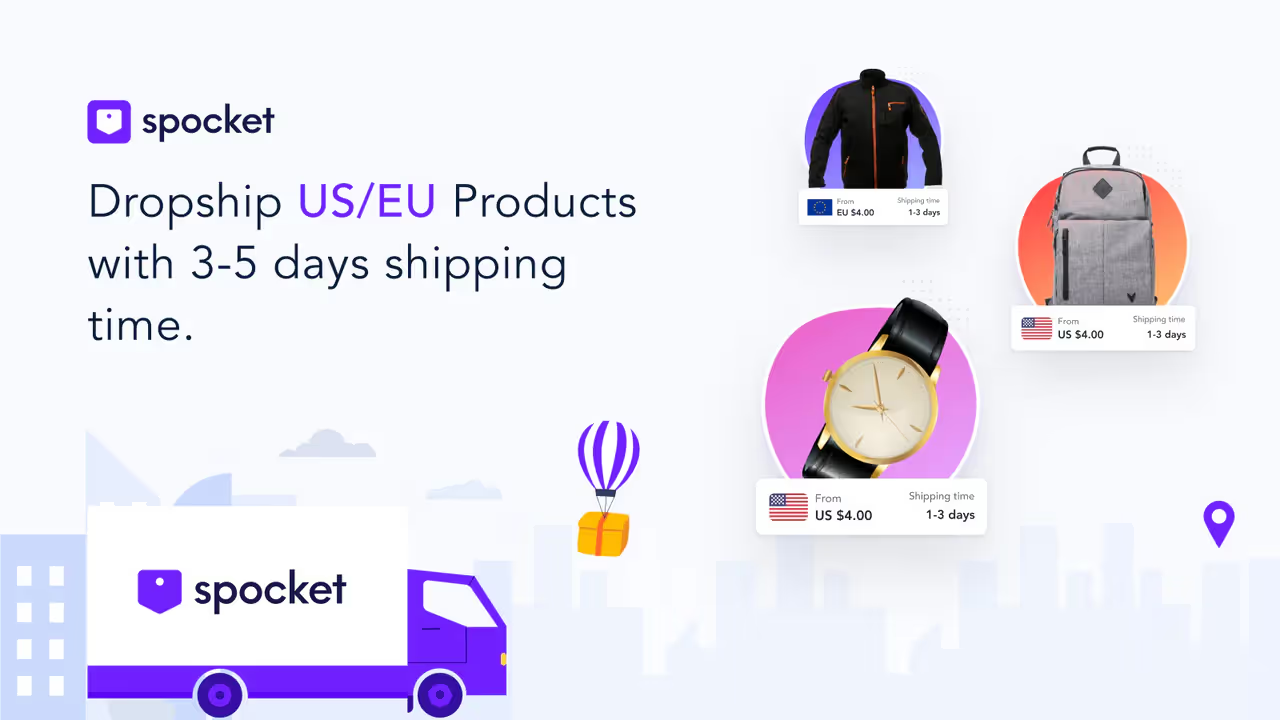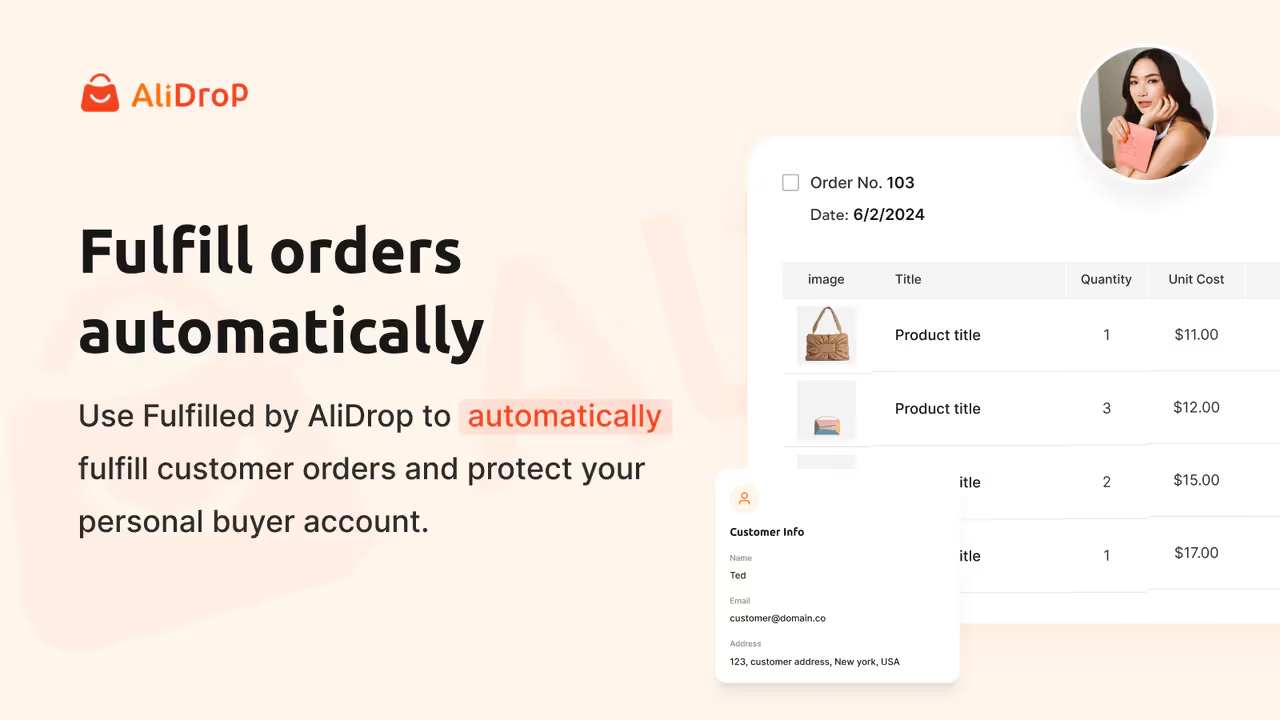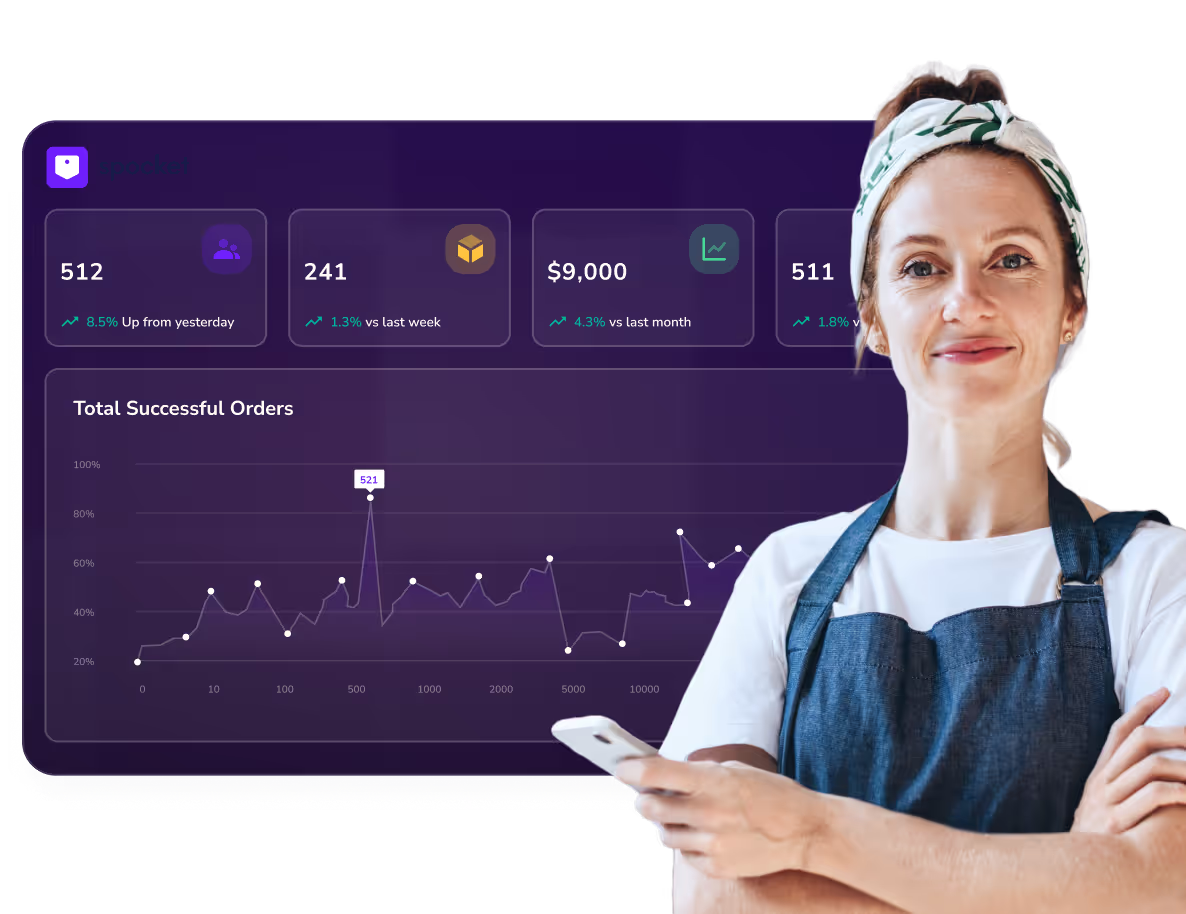If you’re running an online store in the U.S. and tired of selling the same cheap products as everyone else, reverse dropshipping might be the twist you need. Instead of importing low-cost goods from China and selling them here, reverse dropshipping flips the script—you sell high-quality U.S.-made products to buyers overseas.
There’s a growing demand in countries like India, China, and the UAE for premium American goods—organic skincare, supplements, smart gadgets, and more. These consumers are looking for quality and are willing to pay top dollar for authentic, globally trusted brands.
For U.S. sellers, that’s a huge opportunity. You get to sell better products, charge higher prices, and reach customers in booming international markets—without competing in the overcrowded low-cost space. If you're curious about how it works and whether it’s right for your business, you're in the right place. Let’s dive in.
Reverse Dropshipping Explained: The Premium E-Commerce Model
Most people hear “dropshipping” and think of cheap products, slow shipping, and razor-thin margins. But reverse dropshipping turns that on its head. It’s not just a twist—it’s a smarter, more strategic approach built for sellers who want higher profits and less competition.
In this section, we’ll break down what makes reverse dropshipping unique, why it works so well for U.S. sellers, and how it’s different from traditional models you might already know.
What Makes Reverse Dropshipping Different from Traditional Dropshipping
Traditional dropshipping is all about importing low-cost items—usually from China—and selling them to customers in the U.S. The focus is volume: low prices, fast turnover, and competing with dozens of other sellers offering the same thing.
Reverse dropshipping flips that model. You source high-end, U.S.-made products and ship them to international buyers who are hungry for quality. These are buyers who trust American brands, appreciate craftsmanship, and often can’t find these items locally.
Instead of fighting over pennies, you’re offering real value—and charging for it.
How the Reverse Model Targets Global Demand and Quality Gaps
There’s a reason American-made products have a strong reputation overseas. They’re seen as safer, more reliable, and often more innovative. In places like India, the Middle East, and Southeast Asia, consumers want premium wellness products, authentic supplements, clean beauty, and advanced gadgets. And they don’t mind paying a premium.
Reverse dropshipping taps into this demand. It fills the gap left by local markets that can’t match U.S. product quality—especially in niches like skincare, baby products, pet gear, and health tech. If you can identify what’s missing in those regions and deliver it from the U.S., you’re not just selling a product—you’re offering an upgrade.
Key Stats That Prove Reverse Dropshipping Is Rising in 2025
Here’s what makes 2025 a prime year for reverse dropshipping:
- According to Statista, global cross-border B2C e-commerce is projected to surpass $7.9 trillion by 2030, with a large portion of growth fueled by expanding internet access and rising disposable income in regions like Asia and the Middle East.
- Based on Google Trends, search interest in keywords like “American skincare” and “imported supplements” has surged in countries such as India and the UAE, with some terms seeing over 200% increase in the last 12 months.
- Platforms like Spocket and AliDrop have reported increased interest in export-oriented reverse dropshipping models, where U.S.-based sellers ship high-end products to international customers, particularly in emerging e-commerce markets.
These shifts aren’t just hype—they show that international buyers are changing what they value. And if you can meet that demand with U.S.-made goods, you’re perfectly positioned.
How to Start a Reverse Dropshipping Business: Step-by-Step Breakdown
Reverse dropshipping isn’t just a buzzword—it’s a real opportunity for U.S. sellers to tap into premium global markets. But you can’t wing it. To build a successful business, you need a strategic approach. This section walks you through the essential steps to launch your reverse dropshipping store the right way.
Step 1 – Pinpoint Emerging Markets with High Demand
Start by asking: Who wants your product and can’t easily get it? Emerging economies like India, China, UAE, and Southeast Asia are experiencing a boom in middle-class buyers looking for authentic Western brands. These consumers trust U.S.-made products and value exclusivity and quality.
Research platforms like Statista, Google Trends, or Jungle Scout to find where demand is rising. Look at spending habits, population growth, and interest in U.S. exports. The more underserved the market is, the better your chances of standing out.
Step 2 – Choose High-Margin Products That Sell
Don’t just pick what’s trending—choose what’s missing. The best reverse dropshipping products are premium, hard-to-find, and high-margin. Think: organic skincare, clean supplements, smart pet products, and artisanal home goods. Products that tell a story or come with a U.S. reputation work best.
Avoid generic or commoditized items. You want goods that feel import-worthy, not items buyers could find from a local store or factory. Use platforms like Amazon Global, Etsy, or Trend Hunter to discover niche product ideas with international appeal.
Step 3 – Vet and Partner with Global Dropshipping Suppliers
Your supplier makes or breaks the business. Look for partners that can handle international fulfillment, maintain consistent quality, and offer fast, trackable shipping. U.S.-based platforms like Spocket let you work with vetted suppliers who already ship globally and offer branded packaging.
Before committing, test samples yourself. Check for product quality, packaging, and delivery speed. Ask about customs documentation and fees. A solid supplier relationship is the foundation of a smooth and scalable operation.
Step 4 – Build a Store That Highlights Product Quality
Your audience isn’t just buying a product—they’re buying prestige, trust, and quality. Build a store that reflects that. Use platforms like Shopify or WooCommerce to create a clean, easy-to-navigate storefront. Use high-resolution images, detailed specs, and storytelling in your descriptions.
Highlight things that matter to your target audience—Made in the USA, eco-friendly packaging, cruelty-free, FDA-approved, etc. The more your store feels curated and authentic, the easier it is to justify premium pricing.
Step 5 – Set Up International Fulfillment and Returns
Shipping overseas isn’t hard if you plan ahead. Work with suppliers who handle global logistics, or use fulfillment services that specialize in cross-border delivery. Clearly display estimated delivery times and customs information on your product pages.
Returns can be tricky across borders, so offer clear policies. In some cases, it’s more cost-effective to refund the customer and let them keep the product. Use apps like AfterShip or Easyship to streamline tracking and logistics.
Best Reverse Dropshipping Products for High Margins in 2025
Product selection can make or break your reverse dropshipping business. The goal isn’t just to find what’s trendy—it’s to source premium U.S.-made products that are in high demand abroad, difficult to find locally, and carry strong profit margins.
In this section, we’ll explore the top product categories winning in 2025, based on consumer demand, global market gaps, and brand perception overseas.
1. Organic Beauty and Anti-Aging Skincare
Skincare made in the U.S. is trusted globally, especially when it’s organic, cruelty-free, or dermatologist-approved. Ingredients like retinol, hyaluronic acid, and vitamin C serums are highly sought-after in countries like India and UAE, where consumers crave authentic, Western formulations.
Look for niche brands with clean labels, luxury packaging, and a reputation for results. These products often cost more, but that’s exactly what makes them appealing in high-status markets.
2. Smart Fitness Tech and High-End Wearables
The global wellness boom is thriving. Smart devices like AI-powered fitness trackers, portable EMS machines, and posture-correcting wearables are rising in popularity, especially in tech-forward but import-reliant regions like Southeast Asia.
If you're sourcing cutting-edge gadgets made in the U.S., you’re not just selling a product—you’re exporting innovation. That’s something local markets often can’t replicate.
3. Designer Pet Products with Global Appeal
Pet spending is exploding in countries like China and India. High-income pet owners are on the lookout for premium pet beds, grooming kits, healthy treats, and GPS trackers that are hard to find locally but easily sourced from U.S. suppliers.
Products that emphasize quality, comfort, or advanced features are perfect for reverse dropshipping in this category.
4. Luxury Fashion Accessories and Custom Jewelry
While fast fashion dominates in many countries, there’s a growing demand for small-batch, high-end fashion accessories. Think handmade leather goods, sustainable sunglasses, or minimalist jewelry crafted in the U.S.
Shoppers are willing to pay a premium for unique styles that aren’t available through mass-market platforms in their country.
5. Eco-Friendly and Sustainable Lifestyle Products
Sustainability is no longer niche—it’s a global movement. Products like biodegradable phone cases, reusable silicone storage bags, or zero-waste starter kits sell especially well in markets where eco-alternatives are limited or overpriced.
Position these items as both aspirational and responsible. They’re perfect for targeting Gen Z and millennial audiences abroad.
6. Smart Home Devices for Affluent Buyers
Smart thermostats, voice-controlled lights, AI-powered security systems, and other connected home gadgets are popular in the U.S.—but not always accessible elsewhere. That creates a powerful reverse dropshipping opportunity.
International buyers want home upgrades that feel futuristic. If you can deliver that with reliable U.S. brands, you’ll tap into a fast-growing market.
7. Educational and DIY Kits for Modern Households
STEM kits, DIY electronics, craft boxes, and educational toys are in high demand, especially among parents in India, the UAE, and Southeast Asia. These products support remote learning, family bonding, and cognitive development—topics gaining traction worldwide.
Look for educational kits with clear instructions, quality materials, and English-language support for easy global adoption.
Top Reverse Dropshipping Suppliers and Platforms to Use
Choosing the right supplier is critical in reverse dropshipping. You're selling premium products to buyers who expect reliability, quality, and fast delivery. That means you can’t afford to cut corners. A good supplier will help you maintain your brand image and streamline international fulfillment.
Here are the best platforms and suppliers to consider when building your reverse dropshipping business.
1. Spocket – Premium U.S. and EU Suppliers With Global Reach

Spocket is a go-to choice for U.S.-based sellers who want to export high-quality products abroad. The platform specializes in U.S. and EU-made goods, which makes it perfect for reverse dropshipping.
Spocket offers fast global shipping, branded invoicing, and a curated list of reliable suppliers. Whether you're selling skincare, tech accessories, or pet gear, Spocket gives you access to premium items with high profit margins. Plus, many suppliers offer branded packaging, which helps you maintain a polished, professional store.
2. AliDrop – Turnkey Stores for Reverse Dropshipping

AliDrop offers a hands-off store-building solution for dropshippers—including those focused on exporting from U.S. suppliers. Their automation tools can be used not just for AliExpress imports, but also for stores targeting foreign buyers.
You can integrate AliDrop with U.S. supplier databases, create localized storefronts, and automate everything from product uploads to fulfillment. It’s ideal if you're looking for low-code or no-code setup with a focus on international sales.
3. CJ Dropshipping – Custom Packaging and International Warehouses
While CJ is best known for AliExpress-style dropshipping, it also supports U.S. warehouses and custom packaging, making it a great fit for reverse dropshipping with the right filters.
CJ allows you to store inventory in the U.S. and ship globally. If you’re selling in Asia or the Middle East, you can manage faster delivery while offering branded packaging and even product customization. The dashboard can be overwhelming, but the flexibility is worth it if you want to scale.
4. Modalyst – For Niche Premium Brands and Luxury Items
Modalyst specializes in boutique and branded products, which makes it ideal for sellers in the luxury and lifestyle categories. You’ll find U.S. suppliers offering items like sustainable fashion, beauty, wellness, and even home decor.
While pricing is higher, so is the product quality—and that’s the whole point of reverse dropshipping. Modalyst also offers real-time inventory sync, automatic price rules, and integrations with Shopify and BigCommerce.
5. SaleHoo – Verified Wholesale Suppliers With International Shipping
SaleHoo is more of a directory than a supplier platform, but it gives you access to verified, export-ready wholesalers from the U.S. and other countries. If you're building a brand and need control over your supply chain, SaleHoo is a strong starting point.
It’s especially useful for finding small-batch or handmade goods, which perform well in niche overseas markets. The community forum and seller training are also helpful if you're just starting out.
Reverse Dropshipping vs Traditional Dropshipping: Which Is Better in 2025?
If you’re familiar with dropshipping, you might be wondering: how different is reverse dropshipping from the traditional model—and is it actually better? The short answer is yes, but not for everyone.
This section breaks down the key differences so you can decide which model aligns best with your goals, audience, and long-term business vision.
Product Strategy: Niche Premium vs Low-Cost Volume
Traditional dropshipping is built on low prices and high sales volume. You source cheap products—often from China—and sell them at a small markup to customers in the U.S. The game is about quantity, not quality.
Reverse dropshipping, on the other hand, is about selling fewer, better products. You target buyers who care about premium quality and are willing to pay for it. This means you can price higher, offer a curated catalog, and still generate solid profits per sale.
Audience: Status-Conscious Buyers vs Bargain Shoppers
With traditional dropshipping, your customer is usually looking for a deal. They’re price-sensitive and easily swayed by alternatives. That often leads to high return rates and low brand loyalty.
In reverse dropshipping, your customer is more selective. They’re looking for authenticity, exclusivity, or American-made products they trust. This opens the door to stronger branding, higher perceived value, and repeat customers who aren’t just looking for the cheapest option.
Logistics: Cross-Border Shipping vs Local Fulfillment
Traditional dropshipping tends to rely on inbound shipping—moving goods from Asia into the U.S. That usually involves long delivery times, customs delays, and inconsistent supplier quality.
Reverse dropshipping is about outbound shipping—sending goods from the U.S. to international buyers. While this adds complexity in terms of customs and returns, it also means you’re shipping higher-value goods with less product churn, making fulfillment easier to manage at scale.
Branding: Luxury Perception vs Mass-Market Commodity
Let’s be honest—most traditional dropshipping stores feel the same. They use generic images, basic product copy, and the same 10 items every other store sells. It’s a race to the bottom.
Reverse dropshipping gives you a chance to build a real brand. You’re selling U.S.-made products with a story, a higher price point, and genuine value. That opens the door to stronger positioning, brand loyalty, and long-term scalability.
Final Thoughts: Should You Start a Reverse Dropshipping Store in 2025?
If you’re a U.S.-based entrepreneur tired of competing in oversaturated markets with thin margins, reverse dropshipping is your chance to flip the game. Instead of selling what everyone else is selling, you’re offering something global buyers actually crave—authentic, premium U.S. products they can’t easily find at home.
You’re not just building another online store. You’re building a brand that’s based on quality, exclusivity, and value. And with platforms like Spocket and AliDrop supporting global fulfillment, the barriers to entry have never been lower.
Yes, it comes with challenges—cross-border logistics, higher product costs, and a more selective audience. But the tradeoff is worth it: higher profit margins, less competition, and long-term brand equity.
If you’re ready to stop racing to the bottom and start building something sustainable, reverse dropshipping might be exactly what your business needs in 2025.







































